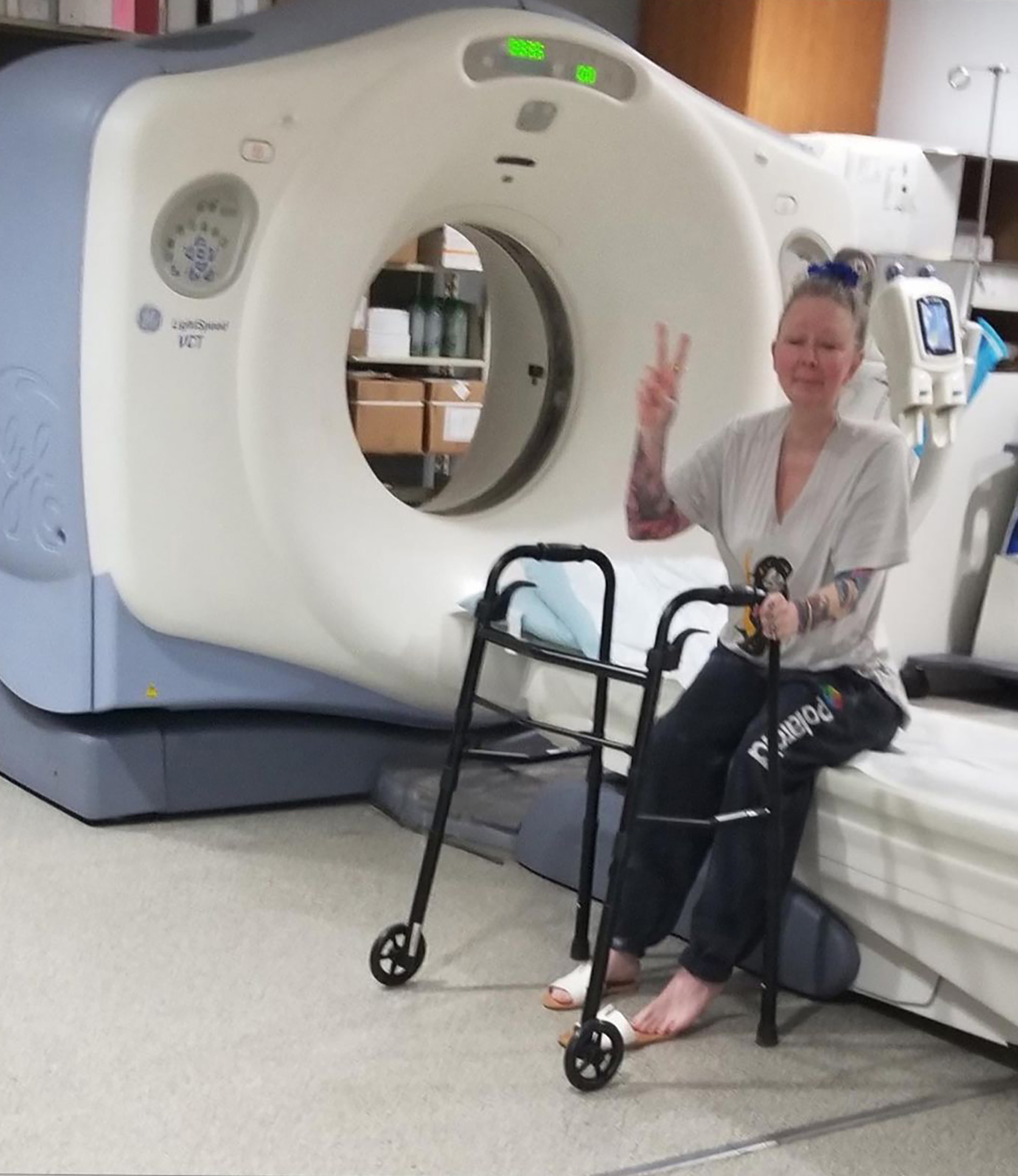Jenna Jameson illness is a common condition that affects many people around the world. It is caused by a virus that infects the respiratory system. Symptoms of Jenna Jameson illness include fever, cough, sore throat, and runny nose.
Jenna Jameson illness is highly contagious and can be spread through contact with an infected person or by touching objects that have been contaminated with the virus. Treatment for Jenna Jameson illness includes rest, fluids, and over-the-counter medications. In most cases, Jenna Jameson illness will resolve on its own within a few days.
Jenna Jameson Illness
Jenna Jameson illness is a common condition that affects many people around the world. It is caused by a virus that infects the respiratory system. Symptoms of Jenna Jameson illness include fever, cough, sore throat, and runny nose.
- Contagious
- Respiratory
- Symptoms
- Treatment
- Prevention
- Complications
- Diagnosis
- Prognosis
- Epidemiology
Jenna Jameson illness is a serious condition that can lead to hospitalization and even death. However, it can be prevented by taking simple steps, such as washing your hands frequently and avoiding contact with people who are sick.
| Name | Born | Birth Place |
|---|---|---|
| Jenna Jameson | April 9, 1974 | Las Vegas, Nevada, U.S. |
Contagious
Jenna Jameson illness is a contagious disease, meaning it can be spread from person to person through contact with respiratory droplets produced by an infected individual when they cough or sneeze. These droplets can land in the mouths or noses of people who are nearby or possibly be inhaled into the lungs.
It is critical to understand the contagious nature of Jenna Jameson illness to prevent its spread. People who are infected with the virus should stay home from work or school and avoid contact with others to reduce the risk of transmission. Additionally, it's essential to practice good hygiene, such as frequent handwashing and covering your mouth and nose when coughing or sneezing, to help prevent the spread of the virus.
By understanding the contagious nature of Jenna Jameson illness and taking steps to prevent its spread, we can help protect ourselves and others from this potentially serious disease.
Respiratory
Jenna Jameson illness is a respiratory disease, meaning it affects the organs and tissues involved in breathing. The respiratory system includes the nose, throat, larynx, trachea, bronchi, and lungs. These organs work together to bring oxygen into the body and expel carbon dioxide.
Jenna Jameson illness can cause a range of respiratory symptoms, including:
Cough Shortness of breath Wheezing Sore throat Runny nose Chest painIn severe cases, Jenna Jameson illness can lead to pneumonia, a serious lung infection that can be life-threatening.
Understanding the connection between Jenna Jameson illness and the respiratory system is critical for developing effective treatments and preventing the spread of the disease. By targeting the respiratory system, treatments can help to relieve symptoms, prevent complications, and improve the overall health of patients with Jenna Jameson illness.
Symptoms
Symptoms are an essential aspect of jenna jameson illness. They can vary depending on the individual and the severity of the infection, but some of the most common symptoms include:
- Cough
Coughing is one of the most common symptoms of jenna jameson illness. It can be dry or productive, and it may be accompanied by chest pain.
- Fever
Fever is another common symptom of jenna jameson illness. It can range from mild to severe, and it may be accompanied by chills.
- Sore throat
A sore throat is a common symptom of jenna jameson illness. It can be mild or severe, and it may be accompanied by difficulty swallowing.
- Runny nose
A runny nose is a common symptom of jenna jameson illness. It can be clear or colored, and it may be accompanied by congestion.
These are just a few of the most common symptoms of jenna jameson illness. Other symptoms may include body aches, fatigue, and headache. In severe cases, jenna jameson illness can lead to pneumonia and other serious complications.
Treatment
Treatment is an integral aspect of managing jenna jameson illness, aiming to alleviate symptoms, prevent complications, and promote recovery. Various approaches are employed to address the different manifestations of the illness.
- Medication
Medications, such as antibiotics, are prescribed to combat the bacterial or viral infection underlying jenna jameson illness. Antipyretics and analgesics may also be used to reduce fever and pain.
- Rest and Fluids
Adequate rest and fluid intake are essential for recovery. Rest helps the immune system fight the infection, while fluids prevent dehydration and support overall bodily functions.
- Steam Inhalation
Steam inhalation can help relieve congestion and soothe sore throats. It can be done using a humidifier or by boiling water and inhaling the steam.
- Over-the-Counter Remedies
Over-the-counter medications, such as cough suppressants and decongestants, can provide temporary relief from symptoms. However, it's important to consult a healthcare professional before using these medications.
Treatment for jenna jameson illness typically involves a combination of these approaches, tailored to the individual patient's condition and response to therapy. Early diagnosis and prompt treatment can significantly improve outcomes and reduce the risk of complications.
Prevention
Prevention plays a pivotal role in managing jenna jameson illness, aiming to reduce the risk of infection and its associated complications. Understanding the modes of transmission and implementing preventive measures are crucial for individuals and communities to safeguard their health.
One of the primary preventive measures is vaccination. Vaccines stimulate the immune system to recognize and combat specific pathogens, including those that cause jenna jameson illness. Vaccination programs have proven effective in reducing the incidence and severity of the illness, protecting individuals and creating herd immunity within populations.
Other preventive measures involve personal hygiene practices, such as frequent handwashing with soap and water, covering coughs and sneezes with a tissue or elbow, and avoiding close contact with individuals who are sick. These practices help prevent the spread of the virus or bacteria that cause jenna jameson illness, reducing the risk of infection.
In summary, prevention is a critical component of managing jenna jameson illness. Vaccination, good hygiene practices, and responsible behavior can significantly reduce the risk of infection and its associated consequences. By implementing preventive measures, individuals and communities can contribute to the overall health and well-being of society.
Complications
Complications are a serious concern in jenna jameson illness, as they can lead to significant health problems and even death. The most common complication of jenna jameson illness is pneumonia, which is an infection of the lungs. Pneumonia can be caused by bacteria, viruses, or fungi, and it can lead to shortness of breath, fever, chills, and cough. Other complications of jenna jameson illness include bronchitis, sinusitis, and ear infections.
In severe cases, jenna jameson illness can also lead to sepsis, which is a life-threatening condition that occurs when the body's immune system overreacts to an infection. Sepsis can lead to organ failure, shock, and death.
Understanding the complications of jenna jameson illness is critical for preventing and treating the condition. Vaccination, good hygiene practices, and early diagnosis and treatment can all help to reduce the risk of complications.
If you have jenna jameson illness, it is important to see a doctor right away to get treatment. Early treatment can help to prevent complications and improve your chances of a full recovery.
Diagnosis
Diagnosis plays a critical role in jenna jameson illness, as it helps healthcare professionals identify the underlying cause of the condition and determine the most appropriate course of treatment. Accurate and timely diagnosis is essential for improving patient outcomes and reducing the risk of complications.
The diagnosis of jenna jameson illness typically involves a physical examination and a review of the patient's medical history. The doctor may also order laboratory tests, such as a blood test or a chest X-ray, to confirm the diagnosis. In some cases, a biopsy may be necessary to rule out other conditions.
Early diagnosis of jenna jameson illness is important because it allows for prompt treatment, which can help to prevent complications and improve the chances of a full recovery. If you have any of the symptoms of jenna jameson illness, it is important to see a doctor right away to get a diagnosis.
Prognosis
Prognosis is a critical component of jenna jameson illness, as it helps healthcare professionals predict the likely outcome of the condition and guide treatment decisions. The prognosis of jenna jameson illness depends on a variety of factors, including the severity of the infection, the patient's age and overall health, and the presence of any underlying medical conditions.
In general, the prognosis for jenna jameson illness is good. Most patients recover fully within a few weeks. However, in some cases, the infection can lead to serious complications, such as pneumonia or sepsis. These complications can increase the risk of death, especially in patients who are elderly or have weakened immune systems.
Understanding the prognosis of jenna jameson illness is important for patients and their families. This information can help them to make informed decisions about their care and to prepare for the future.
Epidemiology
Epidemiology is the study of the distribution and patterns of health events and diseases in a population. It is a critical component of public health, as it helps us to understand the causes of disease and to develop strategies to prevent and control them.
Jenna jameson illness is a respiratory infection caused by a virus. It is a common illness, and it can be spread through contact with respiratory droplets from an infected person. Epidemiology has played a vital role in our understanding of jenna jameson illness. Epidemiologists have studied the patterns of the disease, and they have identified the risk factors for infection. This information has helped us to develop strategies to prevent and control the spread of the disease.
For example, epidemiologists have found that jenna jameson illness is more common in people who are exposed to tobacco smoke. This information has led to public health campaigns to reduce smoking rates. Epidemiologists have also found that jenna jameson illness is more common in people who live in crowded conditions. This information has led to public health campaigns to improve housing conditions.
The study of epidemiology has helped us to understand the causes of jenna jameson illness and to develop strategies to prevent and control the disease. This has led to a reduction in the number of cases of jenna jameson illness, and it has saved lives.
In conclusion, Jenna Jameson illness has a significant impact on individuals and communities worldwide. Through the exploration of its transmission, symptoms, and complications, this article has provided valuable insights into the multifaceted nature of the disease. Understanding the epidemiology of Jenna Jameson illness has enabled us to identify risk factors and develop preventive measures, leading to a reduction in its prevalence and severity.
Key points to remember include:
- Jenna Jameson illness is a highly contagious respiratory infection that can lead to serious complications if left untreated.
- Prevention is crucial, with measures such as vaccination, good hygiene, and early diagnosis playing a vital role in reducing the spread and severity of the disease.
- Understanding the epidemiology of Jenna Jameson illness has helped us identify risk factors and develop effective public health strategies.
Does lee dong wook have siblings
Toni louise cullen
Jesse eisenberg hallie



:max_bytes(150000):strip_icc():focal(400x479:402x481)/jenna-jameson-b285d0eac9c7477aad52b2ef45df4090.jpg)

ncG1vNJzZmioqK67qnrSn6ZrZpSetKrAwKWmnJ2Ro8CxrcKeqmebn6J8q7HNp5hmopGisrS7zWagpaSemsC0esetpKU%3D